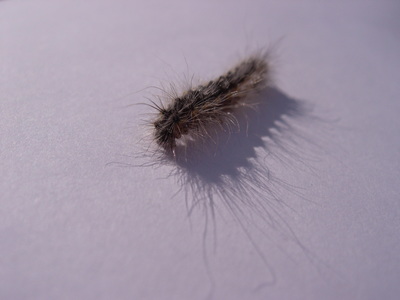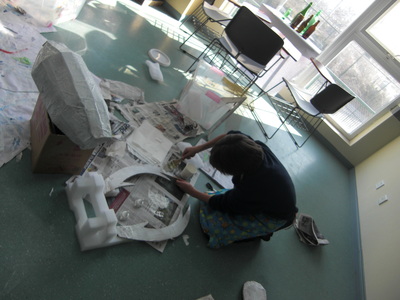Huge Beijing Insects
An Art education project with international children in China. When living in Beijing I was struck by the lack of wildlife, so we went out to find some living creatures! We found insects! We learnt about different insects from China and used them as inspiration for our art. We learnt about wildlife that used to live in China and what has happened to it due to human habits and occupation. We learnt about the resilience of insects and how long they have survived on Earth.
Biodiversity, closely related to deforestation and desertification is the issue of habitat loss and the resulting drop in biodiversity. As vast areas of forest are cleared for farmland, bamboo plantations, timber and fuel wood, endangered animals like pandas struggle to survive.
China's issues with species loss extend far beyond its borders: The slaughter of elephants for ivory, the killing of rhinos for their horns, and the culling of tigers for their bones (as medicine) and penises (as aphrodisiacs) have one primary source: the Chinese market.
Sharks are endangered worldwide, largely because of shark finning — the removal of dorsal fins from still-living sharks — for the Chinese delicacy known as shark fin soup.
Air pollution in Beijing; according to the Environmental Protection Agency's air quality scale, any pollution rating above 300 means the air is unsafe to breathe. Under these conditions, people should stay indoors with an air purifier running and remain as motionless as possible, according to U.S. Embassy Beijing guidelines. Readings above 500 are no longer unusual, readings have reached 886, comparable to living inside a smoking lounge. Manufacturing industries and Beijing's 5 million-plus cars all contribute to the city's crippling air pollution, but most experts primarily blame the coal-burning electrical plants that power China's breakneck economic growth. This air make life for all living creatures very difficult, humans and wildlife alike.
We learnt about:
An Art education project with international children in China. When living in Beijing I was struck by the lack of wildlife, so we went out to find some living creatures! We found insects! We learnt about different insects from China and used them as inspiration for our art. We learnt about wildlife that used to live in China and what has happened to it due to human habits and occupation. We learnt about the resilience of insects and how long they have survived on Earth.
Biodiversity, closely related to deforestation and desertification is the issue of habitat loss and the resulting drop in biodiversity. As vast areas of forest are cleared for farmland, bamboo plantations, timber and fuel wood, endangered animals like pandas struggle to survive.
China's issues with species loss extend far beyond its borders: The slaughter of elephants for ivory, the killing of rhinos for their horns, and the culling of tigers for their bones (as medicine) and penises (as aphrodisiacs) have one primary source: the Chinese market.
Sharks are endangered worldwide, largely because of shark finning — the removal of dorsal fins from still-living sharks — for the Chinese delicacy known as shark fin soup.
Air pollution in Beijing; according to the Environmental Protection Agency's air quality scale, any pollution rating above 300 means the air is unsafe to breathe. Under these conditions, people should stay indoors with an air purifier running and remain as motionless as possible, according to U.S. Embassy Beijing guidelines. Readings above 500 are no longer unusual, readings have reached 886, comparable to living inside a smoking lounge. Manufacturing industries and Beijing's 5 million-plus cars all contribute to the city's crippling air pollution, but most experts primarily blame the coal-burning electrical plants that power China's breakneck economic growth. This air make life for all living creatures very difficult, humans and wildlife alike.
We learnt about:
- Local insect life and their habitats
- How all the wildlife needs each other and how we can protect and conserve it
- How human pollution, culture and development can effect wildlife populations and habitats
- Appreciating the small and beautiful in the world through looking closely in the name of art
- How life adapts to survive, the process of evolution
- Photography, photographic effects, drawing in mixed media, creating our own species of insect through art and making huge sculptures of tiny creatures
- Making art from recycled materials




















